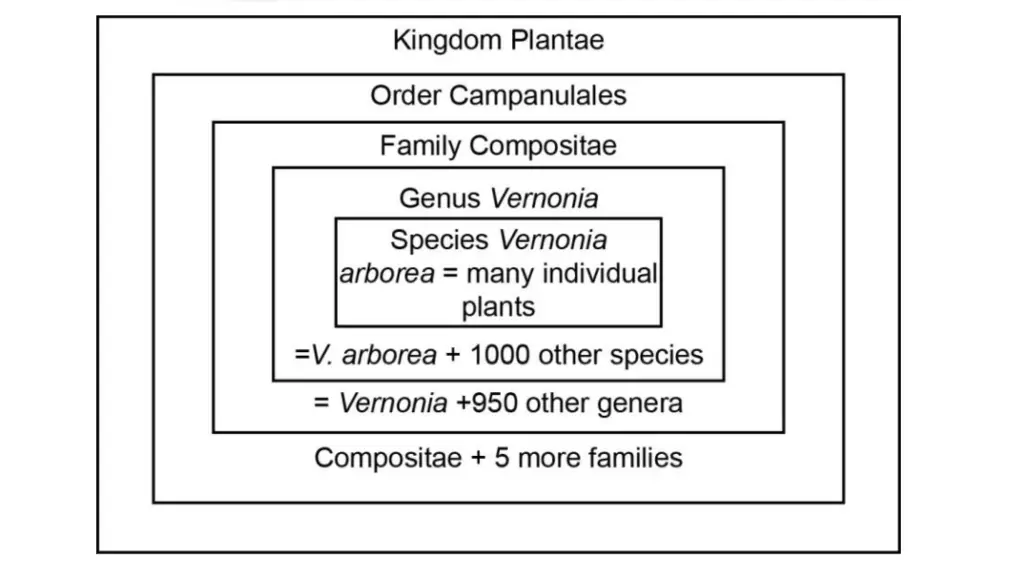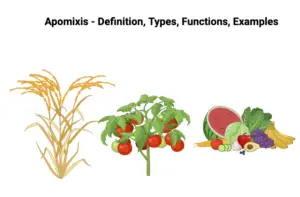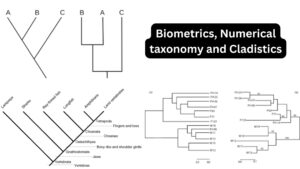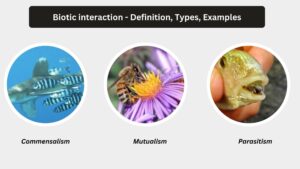What is Taxonomic Hierarchy?
Taxonomic hierarchy is a fundamental concept in biological classification that organizes the vast diversity of life into a structured framework. This system is essential for the accurate identification, naming, and classification of organisms, allowing biologists to communicate effectively about the characteristics and relationships of various species.
At the core of plant taxonomy are four key components: description, identification, nomenclature, and classification. These elements work together to provide a comprehensive understanding of any given plant, minimizing confusion and ensuring clarity in scientific discussions. Despite occasional disagreements in identification or classification, such issues are typically resolved by adhering to the guidelines established by the International Code of Botanical Nomenclature, which provides standardized rules for naming algae, fungi, and plants.
In taxonomic hierarchy, every organism is assigned a scientific name consisting of two parts: a generic name and a specific epithet. This binomial nomenclature is the foundation upon which the hierarchical system is built. Species are grouped into genera, which are then further categorized into families. This process of grouping continues, ascending through orders, classes, phyla, and ultimately reaching the highest taxonomic rank, the Kingdom, or even the broader Domain.
This hierarchical structure, where each level is nested within the one above it, is essential for organizing the diversity of life. The lowest rank is the species, while the highest is the kingdom or domain. Each rank in the hierarchy represents a taxonomic group, collectively forming the taxonomic hierarchy. This system is crucial for understanding the evolutionary relationships between different organisms and for accurately communicating biological information.
In summary, taxonomic hierarchy is a structured system that allows scientists to classify and understand the relationships between organisms, from individual species to the broadest categories of life. This system is dynamic, with ongoing discussions and revisions as new information becomes available, ensuring that the classification of life remains accurate and relevant.
What is the Concept of Taxa?
The concept of taxa is central to the field of taxonomy, which is the science of classifying and naming organisms. A taxon (plural: taxa) is a term used to describe any group or rank within the taxonomic hierarchy, encompassing everything from broad categories like kingdoms to specific levels like species. Understanding the concept of taxa is crucial for grasping how organisms are organized and identified in biological classification systems.
Here are the key aspects of the concept of taxa:
- Definition of Taxon:
- Specific and Unambiguous: A taxon refers to a distinct “entity” or “taxonomic group” within the classification system. Unlike general terms like “entity,” which may be ambiguous, “taxon” has a specific meaning that avoids confusion.
- Descriptive Nature: The term is descriptive, meaning it can be used to represent any rank within the taxonomic hierarchy, whether it be a division (phylum), class, order, family, genus, or species.
- Examples of Taxa:
- Division: For example, Magniliophyta is a division-level taxon.
- Order: The order Rosales is another example.
- Family: The family Asteraceae is a well-known taxon.
- Genus: Mangifera represents a genus taxon.
- Species: The species Allium cepa (onion) is a species-level taxon.
- Flexibility and Plasticity in Taxa:
- Variability in Ranks: The rank of a taxon can change depending on the classification system used. For instance, a taxon’s position in the hierarchy can be adjusted, moving up or down the ranks. This flexibility is more noticeable at higher levels of the hierarchy, such as kingdoms and domains.
- Changes in Classification: Historically, different classification systems have proposed various arrangements for taxa. For example:
- Two-Kingdom System: Initially, living organisms were classified into two kingdoms: Plantae and Animalia.
- Four-Kingdom System: Later, H.E. Copeland suggested a four-kingdom system, introducing Monera and Protista as new taxa.
- Five-Kingdom System: R.H. Whittaker expanded this to five kingdoms: Monera, Protista, Fungi, Plantae, and Animalia.
- Seven-Kingdom System: Further developments led to a seven-kingdom classification, raising the ranks of Procaryota and Eucaryota to super kingdoms.
- Phylogenetic Considerations:
- Monophyletic and Polyphyletic Taxa: In systematics, it is generally accepted that taxa should be monophyletic, meaning they derive from a single common ancestor. A monophyletic taxon, or clade, represents a lineage from a single ancestral population. In contrast, a polyphyletic taxon derives from multiple ancestral sources, which is less desirable in classification.
- Clades: In phylogenetic studies, a taxon often corresponds to a clade, which is a group consisting of an ancestor and all its descendants, representing a complete branch on the tree of life.
What are Ranks?
The concept of ranks in taxonomy is fundamental to the organization and classification of organisms. A rank is defined as a specific level within the taxonomic hierarchy, which denotes the position of a taxonomic category in relation to others. The primary ranks include Kingdom, Division (or Phylum), Class, Order, Family, Genus, and Species. These ranks help in categorizing and identifying organisms based on their similarities and differences.
Key Aspects of Taxonomic Ranks:
- Primary Ranks:
- Kingdom: The highest rank in the taxonomic hierarchy, representing the most extensive classification.
- Division (Phylum): This rank groups organisms based on major structural or functional differences.
- Class: A more specific rank that divides phyla into smaller groups with shared characteristics.
- Order: Orders are subdivisions of classes and consist of families with similar traits.
- Family: A rank that groups related genera; members of a family share more specific features.
- Genus: A genus includes species that are closely related and share a common ancestor.
- Species: The most specific rank, representing individuals that can interbreed and produce fertile offspring.
- Examples of Ranks:
- Engler and Prantl Classification: In their system, the genus Aster belongs to:
- Class: Dicotyledons
- Order: Campanulatae
- Family: Asteraceae
- Bentham and Hooker Classification: In contrast, they place Aster in:
- Class: Dicotyledons
- Order: Asterales
- Family: Compositae
- Engler and Prantl Classification: In their system, the genus Aster belongs to:
- Subdivisions of Major Ranks:
- Sub-Ranks: Each major rank can be further divided into sub-ranks for more detailed classification:
- Sub-Kingdom, Sub-Division: These provide additional layers of classification below the kingdom and division levels.
- Sub-Class, Sub-Order: These ranks help in refining the classification within classes and orders.
- Sub-Family, Tribe, Sub-Tribe: These divisions within families allow for even more precise categorization of genera and species.
- Subdivisions of Genus:
- Sub-Genus: Further divides a genus into smaller groups.
- Section, Sub-Section: These provide additional classification layers within a genus.
- Series, Sub-Series: These are finer subdivisions within a genus, allowing for detailed organization of species.
- Subdivisions of Species:
- Sub-Species: Recognizes variation within a species that may not warrant a separate species status.
- Variety, Sub-Variety: These ranks capture minor differences within a species.
- Forma, Sub-Forma: These ranks denote even smaller differences, often used in horticulture.
- Cultivar: Refers to cultivated varieties of plants with specific traits.
- Sub-Ranks: Each major rank can be further divided into sub-ranks for more detailed classification:
- Variability in Number of Taxa:
- Differences Across Systems: Different classification systems, such as those proposed by Engler and Prantl, Hutchinson, and Bessey, show variability in the number of taxa at different ranks. For example, while the number of families may be similar across systems, the number of orders can vary significantly.
- Engler and Prantl: 44 Orders, 258 Families
- Hutchinson: 76 Orders, 264 Families
- Bessey: 22 Orders, 255 Families
- Differences Across Systems: Different classification systems, such as those proposed by Engler and Prantl, Hutchinson, and Bessey, show variability in the number of taxa at different ranks. For example, while the number of families may be similar across systems, the number of orders can vary significantly.
- Rank Designations and Suffixes:
- Suffixes Indicating Rank: Specific suffixes are often used to denote the rank of a taxon, which helps in identifying its position in the hierarchy:
- Division: -phyta, -Mycota
- Sub-Division: -phytina, -mycotina
- Class: -opsida, -mycetes, -phyceae
- Sub-Class: -opsidae, -mycitidae, -phycidae
- Suffixes Indicating Rank: Specific suffixes are often used to denote the rank of a taxon, which helps in identifying its position in the hierarchy:
| Classification Proposed By | Number of Orders | Number of Families* |
|---|---|---|
| Engler and Prantl | 44 | 258 |
| Hutchinson | 76 | 264 |
| Bessey | 22 | 255 |
| Rank Categories | Ending | Example (taxa) |
|---|---|---|
| Division | -phyta; -Mycota* | Pterophyta; Eumycota* |
| Sub-Division | -phytina; -mycotina | Pterophytina; Eumycotina* |
| Class | -opsida; -mycetes*; -phyceae** | Pteropsida; Basidiomycetes*; Chlorophyceae** |
| Sub-Class | -opsidae; -mycitidae*; -phycidae** | Pteropsidae; Basidiomycidae*; Cyanophycidae** |
| Order | -ales | Asterales; Rosales |
| Sub-Order | -ineae | Asterineae; Rosineae |
| Family | -aceae | Asteraceae; Rosaceae |
| Subfamily | -oideae | Asteroideae; Rosoideae |
| Tribe | -eae | Astereae; Roseae |
| Sub-Tribe | -inae | Asterinae; Rosinae |
What are Categories and Hierarchy?
Categories and hierarchy play a pivotal role in the organization and classification of biological organisms. They form the backbone of taxonomic systems, allowing for the systematic arrangement and identification of organisms. This structure is essential for understanding relationships among different life forms and ensuring consistency across various classification systems.
1. Categorization in Taxonomy
- Definition: Categorization refers to the arrangement or classification of organisms into groups based on their relative importance or inclusiveness within a taxonomic system.
- Function: It serves to bring order to the vast diversity of life forms by grouping organisms that share common characteristics. This grouping is essential for making scientific comparisons and establishing a systematic framework for studying biodiversity.
- Structure: Categorization in taxonomy operates through a series of levels known as ranks. These ranks include species, genus, family, order, class, division, and kingdom. Each rank represents a different level of inclusiveness, with species being the most specific and kingdom the most general.

2. Hierarchy in Taxonomy
- Definition: A hierarchy is a pyramid-like ranking system where each level is subordinate to the one above it. In taxonomy, this hierarchical structure is used to organize categories into a systematic framework.
- Principle: In a taxonomic hierarchy, higher ranks (such as kingdom or division) encompass all the ranks beneath them. This means that the kingdom includes all classes, orders, families, genera, and species within it, creating an inclusive and orderly structure.
- Importance: Hierarchical classification helps avoid confusion by providing a consistent framework across different systems of classification. It ensures that no matter which classification system is used, the overall structure remains similar.
3. Key Features of Taxonomic Hierarchy
- Abstract Categories: Categories in a taxonomic hierarchy are abstract concepts used to group organisms. These categories do not exist in nature as tangible entities but serve as conceptual tools for classification.
- Conventional Order: Categories are employed in a strict conventional order, which must be adhered to for consistency. This order starts from the species level and moves up to the kingdom level.
- Taxa: The actual groups of organisms assigned to these categories are known as taxa. For example, all individuals of a species like Vernonia arborea form a taxon at the species level.
- Ranks and Subordination: Lower ranks in the hierarchy (like species) have fewer members and more specific common characteristics. Higher ranks (like genus or family) have more members and encompass a broader range of characteristics.
4. Properties of the Hierarchical System
- Inclusive Nature: Higher ranks are more inclusive, containing all lower ranks within them. For instance, a genus will include all the species within it, and a family will include all the genera within it.
- Variation and Commonality: Lower ranks contain fewer members who share more specific traits. Conversely, higher ranks include more members who share fewer common traits, reflecting broader classifications.
5. Conceptual Approaches to Hierarchy
- Box-in-Box Concept: This concept illustrates how each taxonomic rank fits within the next higher rank, much like nested boxes. For example, the species Vernonia arborea fits within the genus Vernonia, which in turn fits within the family Asteraceae.
- Dendrogram Concept: A dendrogram is a branching diagram that visually represents the relationships among different taxa within a hierarchy, from species to kingdom.
- Filing-Cabinet Concept: This analogy uses the idea of a filing cabinet with drawers representing different taxonomic ranks. Each drawer holds files that represent the taxa within that rank, illustrating how organisms are grouped and classified.



6. Summary
- Hierarchical Structure: The hierarchical nature of taxonomy ensures that organisms are classified in an orderly manner, facilitating easier identification and study.
- Dynamic Process: The ranking and categorization of organisms are dynamic, evolving with new scientific discoveries and interpretations.
- Significance: Understanding categories and hierarchy in taxonomy is crucial for studying biology, as it provides a structured way to explore the diversity of life on Earth.
What are Taxonomic groups?
Taxonomy is the science of classification, which organizes living organisms into hierarchical groups based on shared characteristics. These taxonomic groups, or taxa, range from broad categories like kingdoms down to specific species. In taxonomic studies, particular emphasis is placed on species, genus, family, and order, as these levels are crucial for understanding both the evolutionary relationships and the structural organization of life. Below is a detailed explanation of these fundamental taxonomic groups:
1. Species
- Definition: The species is the most basic unit in the taxonomic hierarchy. It is defined as a group of individuals that are fundamentally alike, sharing common morphological features that distinguish them from other species.
- Characteristics:
- Morphological Features: Species are typically separated from others based on distinct morphological characteristics. However, these distinctions may not always be clear-cut, as variations can exist within a species.
- Genetic Isolation: Ideally, a species should be genetically isolated from others, exhibiting minimal outbreeding while maintaining sexual reproduction.
- Environmental Stability: The characteristics of a species should remain consistent across different environments, although perfect stability is rare in nature.
- Infraspecific Taxa:
- Subspecies: These are variants within a species, characterized by minor morphological differences and sometimes occupying distinct geographical areas.
- Varieties: Varieties represent morphological variations within a species, which may or may not have specific geographical distributions.
- Forma: The smallest taxonomic category, used to describe trivial variations, such as color or habit, within a species.
2. Genus
- Definition: A genus is a group of closely related species that share more characteristics with each other than with species of other genera within the same family. It is an aggregate of species that are linked by common traits.
- Characteristics:
- Naturalness: A genus is considered natural if its species form a coherent group, clearly distinct from other genera.
- Homogeneity and Distinctiveness: A genus must be both homogeneous (its species share common characteristics) and distinct from other genera.
- Phylogenetic Relationships: The species within a genus are often placed together based on evolutionary relationships, indicating a common ancestry.
- Examples:
- Prunus Genus: Includes species like peach (Prunus persica), plum (P. domestica), and almond (P. amygdalus), all of which share common features like lanceolate leaves and fleshy fruit with a stony seed.
3. Family
- Definition: A family is a broader taxonomic category that groups together multiple genera based on both vegetative and reproductive features. Families are more inclusive than genera and are often delimited by reproductive traits.
- Characteristics:
- Reproductive Features: These include ovary position, types of pistils, number of carpels, placentation, types of fruits, and the arrangement of floral parts. These features are more reliable for classification than vegetative characteristics.
- Vegetative Features: Habit, leaf morphology, and venation are also considered but are generally less reliable than reproductive traits.
- Homogeneity vs. Heterogeneity: Some families, like Asteraceae, are homogeneous, with members sharing very similar characteristics, while others, like Ranunculaceae, are heterogeneous, displaying a wide range of features.
- Examples:
- Homogeneous Families: Asteraceae, characterized by inflorescences like sunflowers.
- Heterogeneous Families: Ranunculaceae, which includes a diverse range of plant types.
4. Order
- Definition: The order is a taxonomic group that ranks higher than the family and includes one or more families. Orders are defined based on an aggregate of characters shared by the included families.
- Characteristics:
- Greater Variability: The defining characteristics of families within an order can be more variable compared to those of genera within a family.
- Evolutionary Divergence: Orders are believed to have diverged early in the evolutionary history of flowering plants, which complicates their definition and limits the fossil record available for study.
- Size and Composition: The number of families within an order can vary significantly, from just one to several, reflecting the diversity within the group.
What is Species Concept?
The concept of species has long been a subject of debate among biologists and taxonomists. Despite various attempts to define it, a universally accepted definition remains elusive. However, the idea of species as distinct entities is firmly entrenched in biological sciences, serving as a fundamental unit in the study of life.
The Evolution of the Species Concept
Over time, the concept of species has evolved through various stages of taxonomic research. Lamprecht (1949), a noted cytogeneticist, identified five distinct periods in the development of the species concept:
- The Period of Description Without Taxonomic Systems: Early descriptions of species lacked formal taxonomic systems, relying primarily on observable characteristics.
- The Period of Artificial and Natural Systems of Classification: This phase saw the development of classification systems, both artificial and natural, to categorize species.
- The Period of Evolutionary Studies: With the advent of evolutionary biology, species were viewed as dynamic entities, subject to change over time.
- The Period of Speciation Through Genome Addition: The discovery that speciation could occur through genome additions marked a significant shift in understanding species.
- The Period of Genetic Basis of Species Barriers: The recognition that genetic mechanisms create barriers between species further refined the concept.
These stages highlight the dynamic nature of the species concept, reflecting ongoing changes in our understanding of biological diversity.
Key Concepts of Species
- Nominalistic Concept:
- Overview: This concept posits that species do not exist as objective entities but are rather constructs of the human mind. It suggests that what we observe are merely collections of individuals with similar characteristics.
- Key Figures: Mayr (1957), Simpson (1961), and Haldane (1956) argued that species are units of convenience rather than actual taxa.
- Morphological Concept:
- Overview: Historically, species have been defined based on morphological characteristics, often derived from herbarium specimens or living material collected from the wild.
- Subjectivity: This approach can be subjective, leading to disagreements among taxonomists, though it remains widely used for practical reasons.
- Typological Concept:
- Overview: This concept relies on the existence of a ‘type’ specimen, which serves as a reference for identifying new species. A species is defined as a group of individuals that share essential properties with the type specimen.
- Practical Advantages:
- It provides a standardized way to classify and communicate information about species.
- It aids in creating databases and maintaining consistency in literature.
- Biological Concept:
- Overview: The biological species concept focuses on reproductive behavior, defining species as groups of actually or potentially interbreeding populations that are reproductively isolated from others.
- Dynamic Process: Unlike morphological or typological concepts, this concept views species as dynamic entities, constantly evolving.
- Evolutionary Concept:
- Overview: This concept defines species as lineages, evolving separately from others and possessing unique evolutionary roles and tendencies.
- Inclusion of Fossil Lineages: It includes both modern and fossil lineages, acknowledging the role of both sexual and asexual groups in species evolution.
- Phylogenetic (Cladistic) Concept:
- Overview: In the post-Darwinian era, the phylogenetic concept defines species as the smallest diagnosable cluster of individuals with a shared pattern of ancestry and descent.
- Molecular Data: This approach heavily relies on molecular data and fossil records, making it more theoretical.
- Ecological Concept:
- Overview: This concept defines species based on their ecological niche, suggesting that each species occupies a unique adaptive zone within its environment.
- Voltera Principle: According to this principle, no two species can occupy the same ecological niche in an ecosystem. If they do, they are considered a single species.
References
- https://egyankosh.ac.in/bitstream/123456789/57299/1/Unit-15_CRC_Formatted.pdf
- https://www.deshbandhucollege.ac.in/pdf/resources/1585129446_BT(H)-IV-Taxonomic_Hierarchy.pdf
- https://lms.durgapurgovtcollege.ac.in/wp-content/uploads/2023/06/AB_E-Resource_3rd-Sem_Plant-Systematics.pdf
- https://dspmuranchi.ac.in/pdf/Blog/1588179626596_Taxonomic%20Hierarchy%20final.pdf



